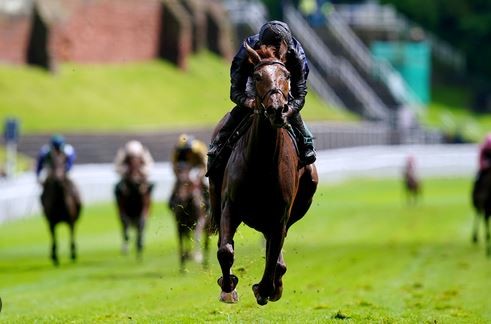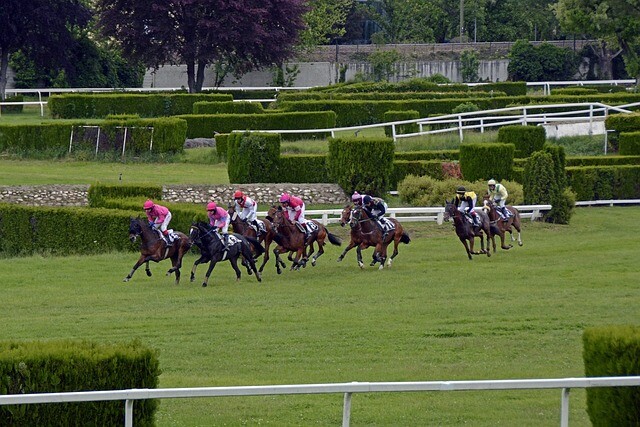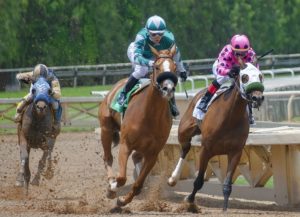Which is the only horse to have won the Cesarewitch Handicap twice?
 The second leg of the traditional “Autumn Double”, the Cesarewitch Handicap is run over two and a quarter miles at Newmarket in October. The title is derived from the Russian word “tsarevich”, the title awarded to the firstborn son of a tsar, and the race was so-named in honour of Alexander, the eldest son of Emperor Nicholas I, who ascended to the Russian throne in 1855.
The second leg of the traditional “Autumn Double”, the Cesarewitch Handicap is run over two and a quarter miles at Newmarket in October. The title is derived from the Russian word “tsarevich”, the title awarded to the firstborn son of a tsar, and the race was so-named in honour of Alexander, the eldest son of Emperor Nicholas I, who ascended to the Russian throne in 1855.
The Cesarewitch is run on a wide, galloping, L-shaped course with a right-handed bend at halfway into what is, at a mile and a quarter, the longest home straight in the country. Consequently, despite the marathon distance covered, the general consensus is that horses drawn high in the Cesarewitch, which has a safety limit 34, are at a disadvantage. The last three winners were drawn 3 of 31, 9 of 21 and 6 of 32, but they were preceded by two winners drawn 20, of 34 and 30 runners respectively, and at least one horse drawn in the twenties has made the first three in all bar one of the last four renewals.
The Cesarewitch was inaugurated in 1839 and, in recent years, has posed a thorny puzzle for punters. Since 2000, just seven winners, four of which were sent off favourite, have been returned at single-figure prices and have been accompanied by winners at 66/1 (twice), 50/1 (twice) and 25/1. Indeed, one of the 66/1 winners was Aaim To Prosper, trained by Brian Meehan, who gamely repelled challengers in 2012, thereby supplementing his previous win, off a 20lb lower mark, two years previously to become the first, and so far only, horse to win the Cesarewitch Handicap twice.
 The late Queen Elizabeth II, who died on September 8, 2022, aged 96, was the longest-serving monarch of the United Kingdom. Her Majesty was also, arguably, the most enthusiastic Royal owner, breeder and racegoer in British history. A regular attendee at the Derby at Epsom and, of course, Royal Ascot – where she celebrated 24 winners as an owner, including Estimate in a historic Gold Cup in 2013 – won every British Classic except the Derby.
The late Queen Elizabeth II, who died on September 8, 2022, aged 96, was the longest-serving monarch of the United Kingdom. Her Majesty was also, arguably, the most enthusiastic Royal owner, breeder and racegoer in British history. A regular attendee at the Derby at Epsom and, of course, Royal Ascot – where she celebrated 24 winners as an owner, including Estimate in a historic Gold Cup in 2013 – won every British Classic except the Derby. Anyone who witnessed the 1981 Derby first-hand, including your correspondent, may find it hard to believe that it’s the better part of four-and-a-half decades since Shergar turned the Epsom Classic into a procession. Of course, the name of Shergar would become infamous beyond the racing world when two years later, having been syndicated for £10 million to stand at the Ballymany Stud in Co. Kildare, he was abducted by masked gunmen and never seen again. In all probability, he was slaughtered by Provisional Irish Republican Army (IRA) shortly afterwards, but no-one has ever officially claimed reponsibility and his remains have never been found.
Anyone who witnessed the 1981 Derby first-hand, including your correspondent, may find it hard to believe that it’s the better part of four-and-a-half decades since Shergar turned the Epsom Classic into a procession. Of course, the name of Shergar would become infamous beyond the racing world when two years later, having been syndicated for £10 million to stand at the Ballymany Stud in Co. Kildare, he was abducted by masked gunmen and never seen again. In all probability, he was slaughtered by Provisional Irish Republican Army (IRA) shortly afterwards, but no-one has ever officially claimed reponsibility and his remains have never been found. Run over 2,000 metres, or approximately a mile and a quarter, on a dirt surface, the Breeders’ Cup Classic is the most valuable and prestigious race run during the Breeders’ Cup World Championships. Established, as a one-day fixture, in 1984 and expanded to two days in 2007, the Breeders’ Cup consists of a series of 14 Grade 1 races, run over a variety of distances, on dirt and turf, at one of a selection of venues throughout North America.
Run over 2,000 metres, or approximately a mile and a quarter, on a dirt surface, the Breeders’ Cup Classic is the most valuable and prestigious race run during the Breeders’ Cup World Championships. Established, as a one-day fixture, in 1984 and expanded to two days in 2007, the Breeders’ Cup consists of a series of 14 Grade 1 races, run over a variety of distances, on dirt and turf, at one of a selection of venues throughout North America.